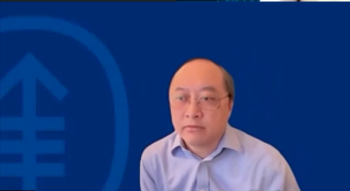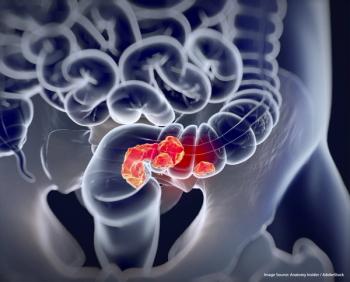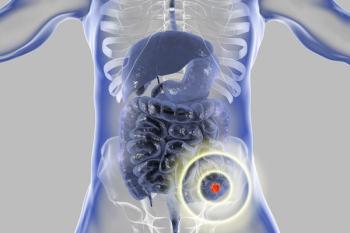
Oncology NEWS International
- Oncology NEWS International Vol 14 No 8
- Volume 14
- Issue 8
Benefit of FOLFOX4 Confirmed at 4-Year Follow-up of MOSAIC Trial
PARIS, FRANCE-Analysisof disease-free survival data at 4 yearsinto the MOSAIC trial “amplifies thebenefit of FOLFOX4 obtained at 3
PARIS, FRANCE-Analysisof disease-free survival data at 4 yearsinto the MOSAIC trial "amplifies thebenefit of FOLFOX4 obtained at 3years," reported the trial's lead investigator,Aimery de Gramont, MD, ofHpital Saint Antoine in Paris (abstract3501).The MOSAIC (Multicenter InternationalStudy of Oxaliplatin/FU-LVin the Adjuvant Treatment of ColonCancer) trial was designed to demonstratean increase in disease-free sur-vival in stage II and III colon cancer. Ata median follow-up of 56.2 months,the disease-free survival rate was 69.8%in patients receiving fluorouracil/leucovorin(5-FU/LV) and 76.4% inpatients receiving FOLFOX4 (fluorouracil,leucovorin, oxaliplatin [Eloxatin]).This 6.6% difference (P > .001;hazard ratio [HR] = .77) in diseasefreesurvival between the two arms ofthe study translates into a 23% reductionin the risk of relapse, Dr. de Gramontsaid.
Clearer Benefit inStage III DiseaseFor patients with stage II disease(40% of both arms), the difference indisease-free survival was 3.5%, and forpatients with stage III disease (60%),the difference was 8.6%, favoring theFOLFOX4 arm."The majority of the benefit is clearerin stage III, but we see a difference instage II. I don't think this is either anendorsement or indictment for usingthis regimen in stage II," noted LeonardB. Saltz, MD, of MemorialSloan-Kettering Cancer Center in NewYork, a discussant for this ASCO presentation."Patients who are higher risk stageII clearly have a prognosis appropriateto be considered along with the besttherapies for stage III. For the lowerrisk stage II patients, I think toxicityissues have to be considered," Dr. Saltzadded.In patients with stage III diseaseand fewer than four positive nodes,the difference in survival was 7.2%; inpatients with more than four positivenodes, "the difference was an impressive11.5%," Dr. de Gramont said."This study has met elegantly itsprimary objective and this is why FOLFOXhas been registered to treat patientswith stage III colon cancer," heconcluded.Data were reported for 1,123 patientsin each of the study arms. Overallsurvival at 4 years was 82.8% in the5-FU/LV arm and 84.9% in the FOLFOX4arm. Notably, there were fewerpatients alive with recurrence in theFOLFOX4 arm than in the 5-FU/LVarm (83 patients [7.4%] vs 134 patients[11.9%]). "With the differencein patients alive with recurrence, thereis no doubt that the final difference insurvival will be significant," Dr. deGramont said.The relapse rate was 24.8% in theFOLFOX4 study arm and 30.7% in the5-FU/LV arm.Long-term SafetyGrade 3/4 neutropenia was muchmore common among patients receivingoxaliplatin, occurring in 41% ofthose in the FOLFOX4 arm and 4.7%of those in the 5-FU/LV arm (see Table1). Febrile neutropenia was uncommonin both arms, affecting 1.8%of the FOLFOX4 arm and 0.2% of the5-FU/LV arm. "GI toxicity was mild,and that is a good reason to keep theFOLFOX4 regimen in the next adjuvantstudies," Dr. de Gramont said.Neuropathy occurred among12.4% of patients in the FOLFOX4arm but was completely resolved in80% of patients and at least partiallyresolved in almost all patients.Long-term safety was demonstratedby no significant increase in secondcancers.
Articles in this issue
over 20 years ago
Intermittent Erlotinib With Docetaxel Shows Promise in NSCLCover 20 years ago
Erlotinib Shows Early Activity in Liver Cancerover 20 years ago
Erlotinib Shows Promise as First-Line Therapy, Phase II Data Showover 20 years ago
Bevacizumab/Erlotinib CombinedBoost Responses in Renal Cell CaNewsletter
Stay up to date on recent advances in the multidisciplinary approach to cancer.

















































































